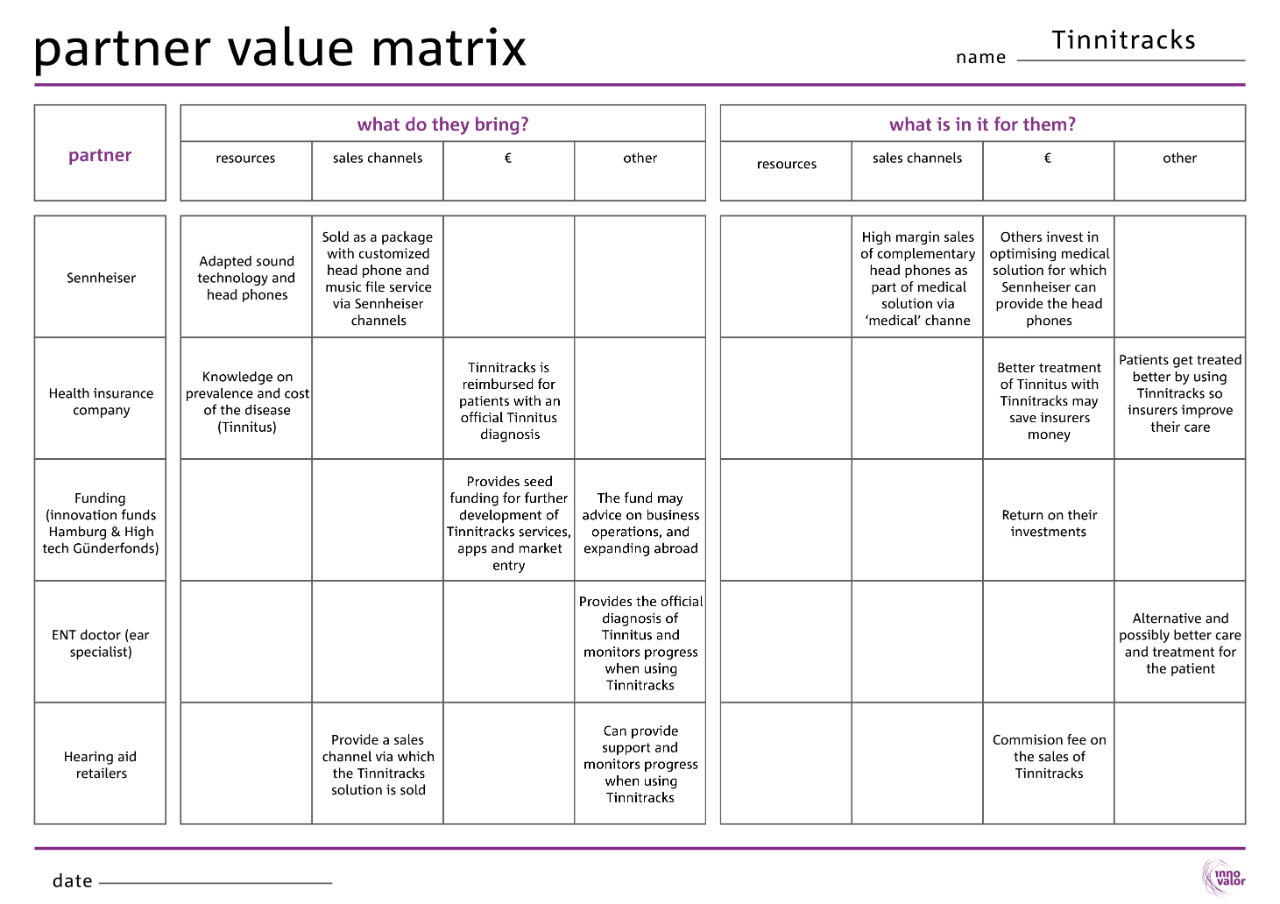Partner Value Matrix

Tips for use
You can fill out the Partner Value Matrix on your own or with your colleagues. Make sure you have a good understanding of the position and views of your (potential) partners. This can easily be done by talking to them.
Use the Partner Value Matrix template to value your partners. Make a large printout to use during a brainstorm. Get inspiration from the Partner Value Matrix example of Tinnitracks, a music service for treating tinnitus.
How to use
For sustainable collaboration with partners it is important that each partner perceives benefits from the collaboration. The actual form of the relationships and the arrangements between you and your partners will depend on how each party views these mutual benefits. It is therefore important for you to know what a partner contributes to your business, and, the other way around, what is in it for them. This knowledge will help you to make the right arrangements with existing partners or to convince new partners to collaborate.
Follow the three steps below to fill in the Partner Value Matrix:
Step 1: select the important partners
In the first step write down the names of your important (potential) partners in the first column of the Partner Value Matrix. Select your most important partners by determining which partners have the largest influence on your business.
Step 2: what do they bring?
Now that you have written down the important partners, think about what these partners bring to your business. Are they investment partners and bring money to the table? Do they bring particular resources or sales channels that you need but do not have yourself? Resources might be material inputs, specialist knowledge, complementary products and services, IPR, sales channels etc. A key benefit from a partner can also be to realise your sales via their channels.
Write down what partners bring to your business in the appropriate columns of the Partner Value Matrix.
Step 3: what is in it for them?
Just like you wrote down what partners bring to your business, you can think about what you bring to the businesses of your partners. What is in it for them? This could be money to invest in your partners’ products or services, resources or sales channels. A resource can again be something tangible like materials or machines but also intangible resources like branding, knowledge or a joint innovation effort.
Write down what benefits you provide to your partners in the appropriate columns of the Partner Value Matrix.